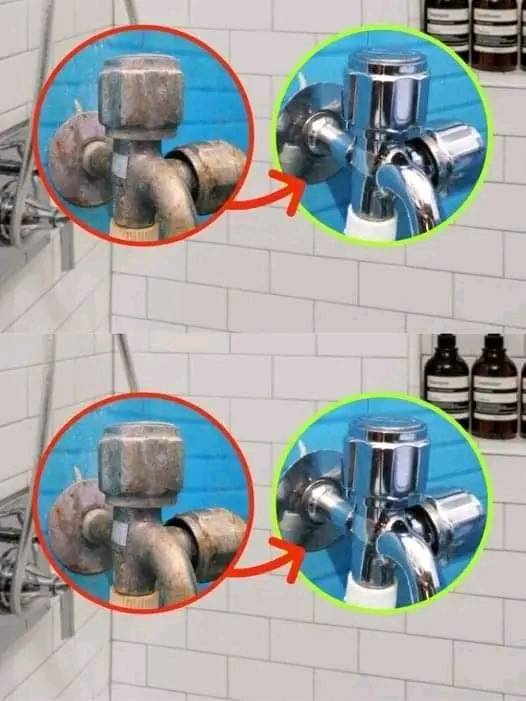Is your shower’s water flow dwindling, or does your once-sparkling faucet now appear dull and chalky? These are telltale signs of limescale buildup—a common issue in areas with hard water. Limescale not only mars the appearance of your fixtures but can also impede their functionality. Fortunately, with the right approach, you can effectively remove limescale and rejuvenate your shower fixtures to their original brilliance.
Understanding Limescale and Its Formation
Limescale, scientifically known as calcium carbonate, forms when hard water—water rich in minerals like calcium and magnesium—evaporates, leaving behind mineral deposits. These deposits accumulate over time, especially on surfaces that frequently come into contact with water, such as shower faucets, heads, and tiles. The buildup not only affects aesthetics but can also lead to reduced water flow and potential damage to appliances and plumbing systems.
Effective Methods to Remove Limescale
Addressing limescale promptly is essential to maintain both the functionality and appearance of your shower fixtures. Here are several proven methods to tackle limescale buildup:
- White Vinegar SoakWhite vinegar is a natural acid that effectively dissolves mineral deposits.
- For Removable Fixtures: Detach the showerhead or faucet parts and submerge them in a container filled with white vinegar. Let them soak for at least an hour. After soaking, scrub any remaining deposits with a soft brush, rinse thoroughly with water, and reinstall.
- For Fixed Fixtures: Fill a plastic bag with white vinegar and secure it around the fixture using a rubber band, ensuring the affected area is fully submerged. Leave it in place for an hour before removing the bag, scrubbing off loosened deposits, and rinsing with water.
- Lemon Juice ApplicationLemon juice contains citric acid, which can break down limescale.
- Apply fresh lemon juice directly to the limescale-affected areas using a cloth or sponge.
- Allow it to sit for about 10 minutes to penetrate the deposits.
- Scrub gently with a soft brush to remove the loosened limescale.
- Rinse the area thoroughly with water and dry with a clean cloth.
- Baking Soda PasteBaking soda acts as a mild abrasive, aiding in the removal of limescale without damaging surfaces.
- Mix baking soda with a small amount of water to create a thick paste.
- Apply the paste to the limescale deposits and let it sit for 15 minutes.
- Use a soft brush or cloth to scrub the area gently.
- Rinse thoroughly with water and wipe dry.
- Commercial Limescale RemoversFor stubborn or extensive limescale buildup, specialized commercial cleaners can be effective.
- Follow the manufacturer’s instructions carefully, as these products contain strong acids.
- Ensure proper ventilation when using chemical cleaners and wear protective gloves to prevent skin irritation.
- After treatment, rinse the area thoroughly to remove any residual cleaner.
Preventing Future Limescale Buildup
Preventing limescale is more manageable than removing it repeatedly. Implementing the following practices can help minimize future buildup:
- Regular Cleaning: Wipe down shower fixtures with a dry cloth after each use to remove water droplets that can lead to mineral deposits.
- Install a Water Softener: A water softener reduces the mineral content in your home’s water supply, effectively preventing limescale formation.
- Use a Squeegee: After showering, use a squeegee to remove water from glass doors and tiles, reducing the chance for limescale to develop.
- Apply Protective Coatings: Some products can be applied to fixtures to create a barrier against mineral deposits, making cleaning easier and less frequent.
The Impact of Hard Water on Your Home
Understanding the broader effects of hard water can underscore the importance of addressing limescale issues:
- Appliance Efficiency: Limescale can accumulate in appliances like water heaters and dishwashers, reducing their efficiency and lifespan.
- Plumbing Concerns: Mineral deposits can narrow pipe diameters, leading to decreased water pressure and potential blockages.
- Aesthetic Issues: Beyond functional problems, limescale leaves unsightly marks on fixtures, glass, and tiles, detracting from your bathroom’s appearance.
Conclusion
Maintaining a limescale-free shower is essential for both the functionality of your fixtures and the overall aesthetics of your bathroom. By employing natural remedies like white vinegar, lemon juice, and baking soda, or opting for commercial cleaners when necessary, you can effectively remove existing limescale. Coupled with preventive measures such as regular cleaning and considering a water softening system, you can keep limescale at bay, ensuring your shower remains as good as new.
For a visual demonstration of these cleaning methods, consider watching the following tutorial:

